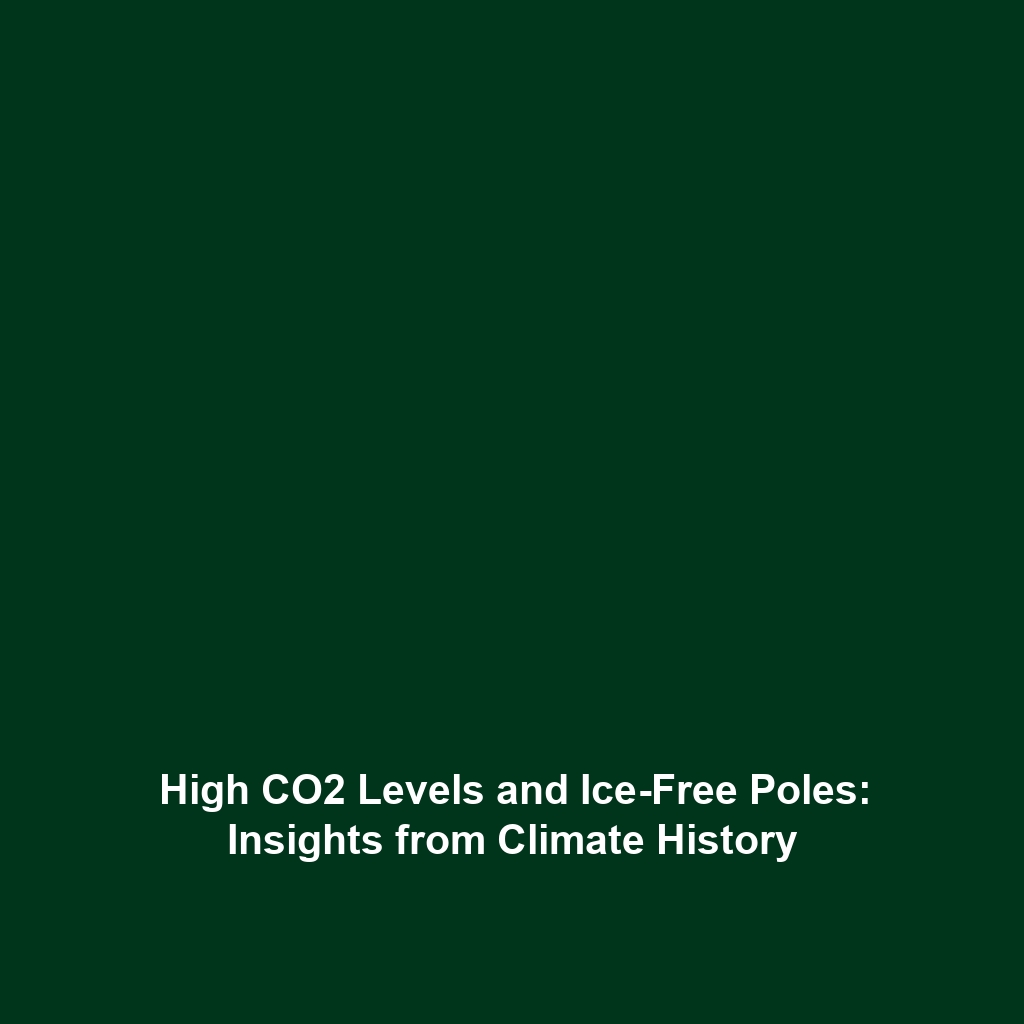High Atmospheric CO2 Levels and the Absence of Polar Ice Caps in Climate History
Introduction
The study of high atmospheric CO2 levels and the absence of polar ice caps provides crucial insights into Earth’s climate history. These phenomena highlight significant climatic shifts that have shaped our planet over millions of years. Understanding the nexus between elevated CO2 concentrations and ice cap absence is vital for comprehending past climate patterns, and the implications for future climate scenarios. As researchers delve into these historical contexts, they shed light on Climate History and its relevance to contemporary environmental issues.
Key Concepts
Understanding Atmospheric CO2 Levels
High atmospheric CO2 levels are characterized by concentrations significantly exceeding current baseline levels. This condition has been observed in various geological epochs, particularly during the Paleogene period, when polar regions were devoid of ice, leading to warmer global temperatures.
The Role of Polar Ice Caps
The absence of polar ice caps serves as an indicator of warmer climates. Ice caps reflect sunlight, thus helping to regulate Earth’s temperature. When these ice caps diminish, less sunlight is reflected, further warming the atmosphere and creating a feedback loop.
Connecting to Climate History
This interplay of CO2 levels and ice cap presence exemplifies key themes in climate history, demonstrating how Earth’s climate has repeatedly transitioned between warming and cooling phases over geological time scales.
Applications and Real-World Uses
Understanding the relationship between high atmospheric CO2 levels and polar ice cap conditions offers numerous real-world applications in Climate History. Key applications include:
- Climate Modeling: Researchers use historical data to model future climate scenarios, emphasizing how past CO2 levels influenced ice cap dynamics.
- Policy Formulation: Insights from past climates can inform present-day environmental policies and climate agreements aimed at reducing greenhouse gas emissions.
- Public Awareness: Educational initiatives can leverage historical evidence to raise awareness about the effects of human activities on climate change.
Current Challenges
While studying high atmospheric CO2 levels and the absence of polar ice caps is essential, there are significant challenges faced by researchers:
- Inconsistent data across different geological epochs complicates comparative analysis.
- Modeling the intricate feedback mechanisms between CO2 levels and ice cap dynamics requires advanced computational resources.
- Political and social implications of climate change research pose challenges in securing funding and public support.
Future Research and Innovations
Future research aimed at uncovering the dynamics of high atmospheric CO2 levels and the absence of polar ice caps is expected to yield significant innovations. Potential areas for exploration include:
- Next-gen Climate Models: Advances in computational science may enable more accurate simulations of past climates.
- Geoengineering Solutions: Research into carbon capture technologies could inform strategies for mitigating current CO2 levels.
- Enhanced Paleoclimate Studies: New methods for analyzing ice core data may provide better insights into past CO2 fluctuations.
Conclusion
In summary, the investigation into high atmospheric CO2 levels and the absence of polar ice caps not only enriches our understanding of Climate History but also holds profound implications for contemporary and future climate challenges. As research evolves, it is essential to integrate these findings into policy and community efforts aimed at combating climate change. For more extensive reading on related topics, explore our sections on Climate Change and Paleoclimate Studies.

Leave a Reply